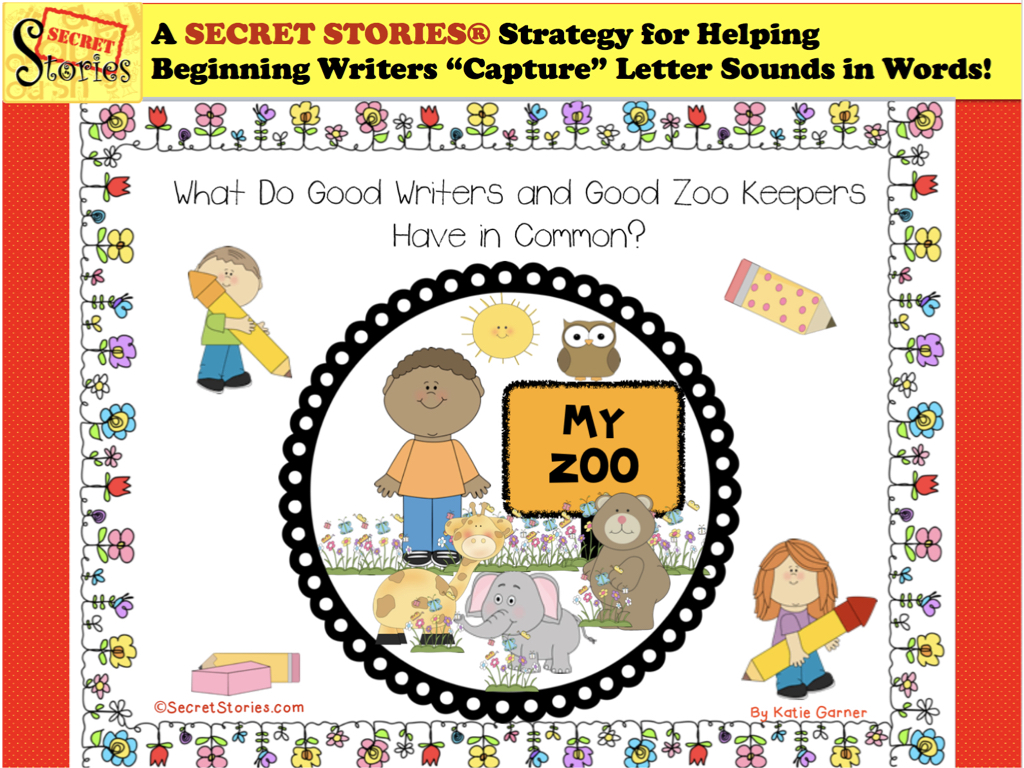How to Teach Persuasive Writing in First Grade
How to Teach First Graders About Persuasive Writing
Teaching persuasive writing is not easy, and getting kids excited about doing it — especially first graders — is even harder! But not when there are leprechauns involved….
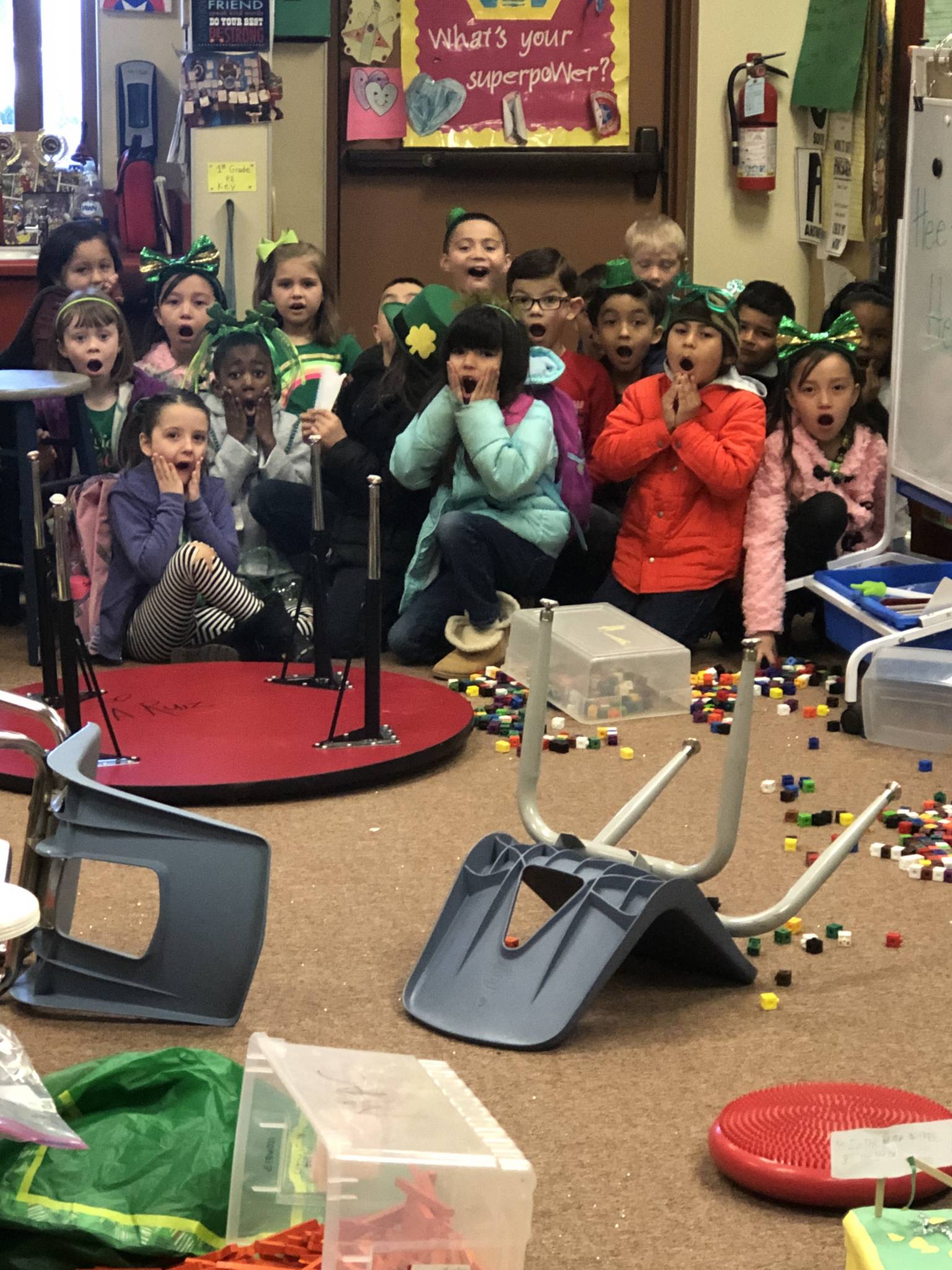
Now you might be thinking, “This lady is crazy! Look at that mess! Why would anyone purposely ransack their own classroom for the sake of a persuasive writing lesson?” And maybe you’re right. But in our little first grade classroom, reading and writing activities provide the perfect “playground” for adventures like these! Knowing the Secrets empowers my kiddos (many of whom are ELL) to read what they love and write the stories that they want to tell! And unlike average first graders midyear, they aren’t the least bit reliant on sight words to read and write, as they OWN the code!
My name is Renee McAnulty, and I am a first grade teacher at Cottonwood Elementary School in Hesperia California, and you may remember me from previous guest posts on Katie’s Blog.
Increasing Student Engagement with Persuasive Writing
I am that teacher who is constantly trying to come up with creative ways to get my kids completely engaged in our lessons. When it comes to teaching beginning readers and writers, the first (and most important) step is to ensure that they have the tools they need to read write with! And that’s not easy, given how little of the code (i.e. phonics skills) the average first grader has of the code at this point in first grade, as per the grade level scope and sequence in our reading series.
Add to that the constant pressure of trying to compete with video gaming, YouTube, high energy tv shows, etc., focusing students’ attention on reading and writing tasks can be challenging! My special recipe includes the “4C’s” — Creativity, Critical thinking, Collaboration, and Communication….along with a “sprinkling” of Secrets! Combining all of these ingredients has completely transformed what reading and writing looks like in our classroom. We have actually become so strong in our abilities, that we sometimes have to use writing to get ourselves out of sticky situations, like the one that happened last week.
Before I explain the chaos, keep in mind that we are first graders, and as such, we have very BIG imaginations!
—We believe in magic.
—We believe in fairies (and actually have one living in our classroom at the moment)
—We believe in elves (and host an Elf-exchange program with the North Pole each December)
—And we believe in leprechauns.
In fact, did you know that leprechauns are responsible for messing up classrooms all over the world? If you don’t believe me, Google it, as their mayhem is well-documented. This is why I had my munchkins create leprechaun traps. We even put on a “leprechaun exhibit” for the entire school to show off our creative traps, and to encourage others to do the same.
So, after making and setting our traps, we left them out overnight. When we returned to our classroom the next morning, it was pure chaos! The leprechauns had not only escaped from our traps, but they trashed our room, leaving us to clean up their mess…..and it was a BIG mess!
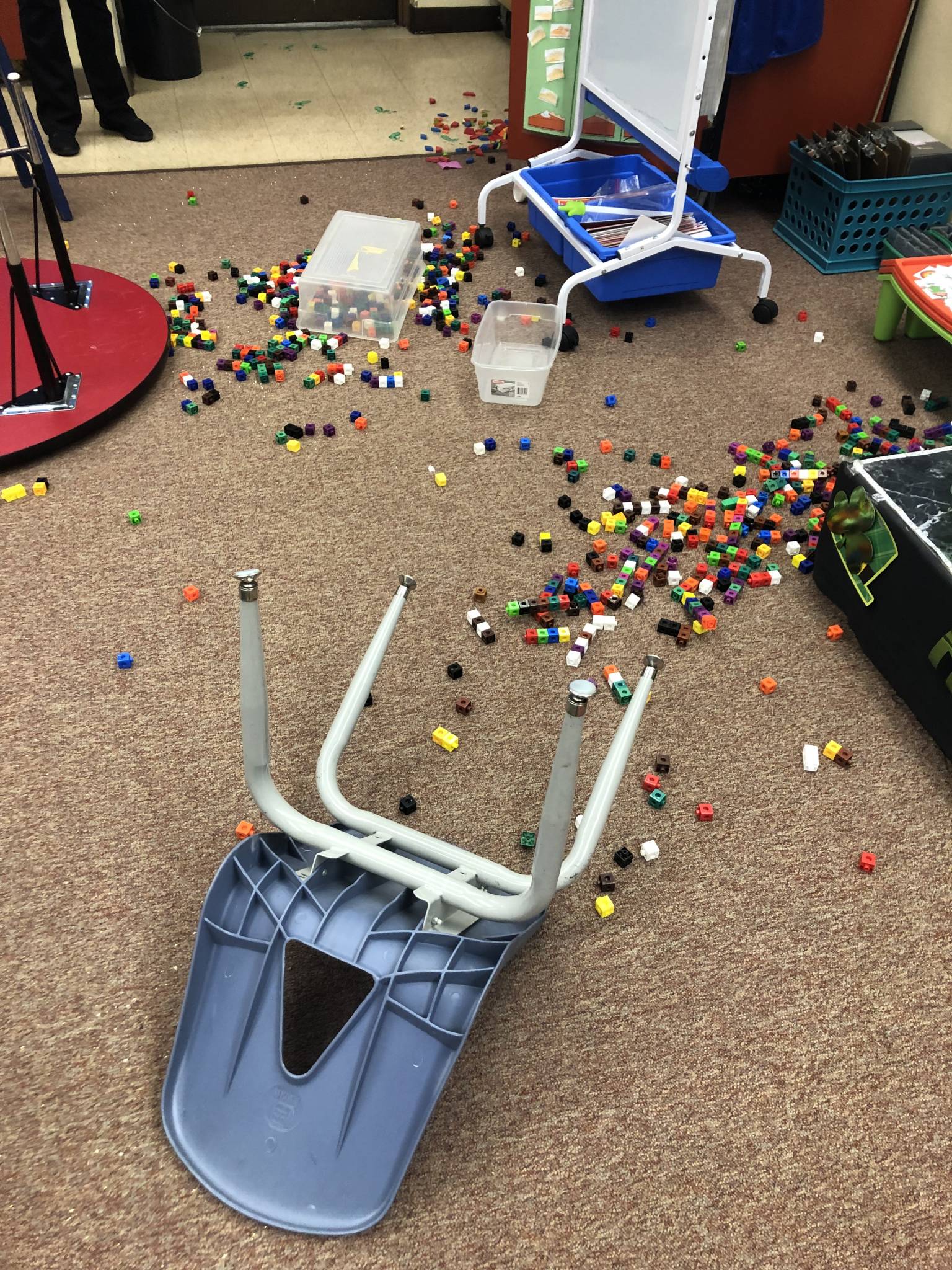
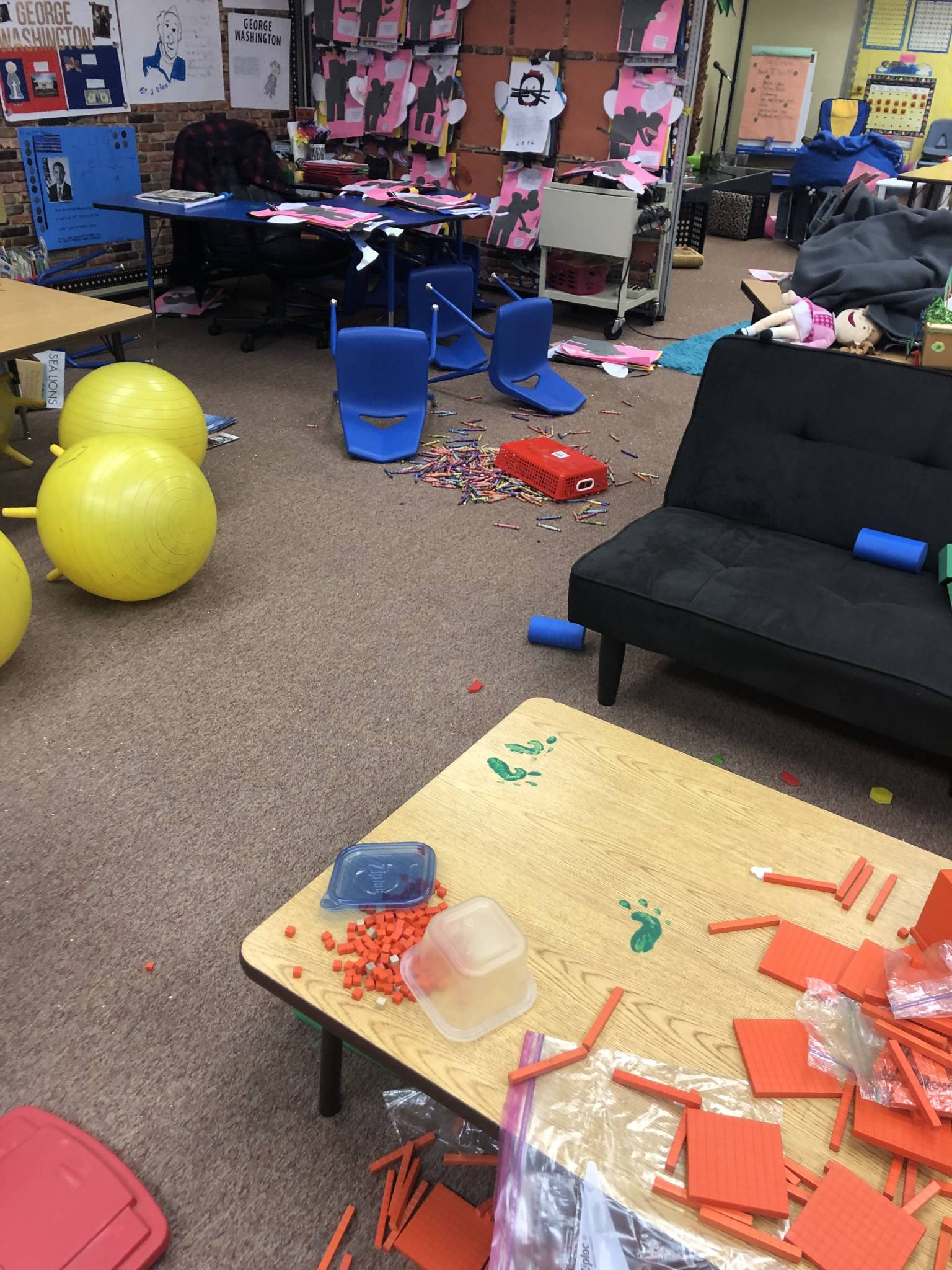
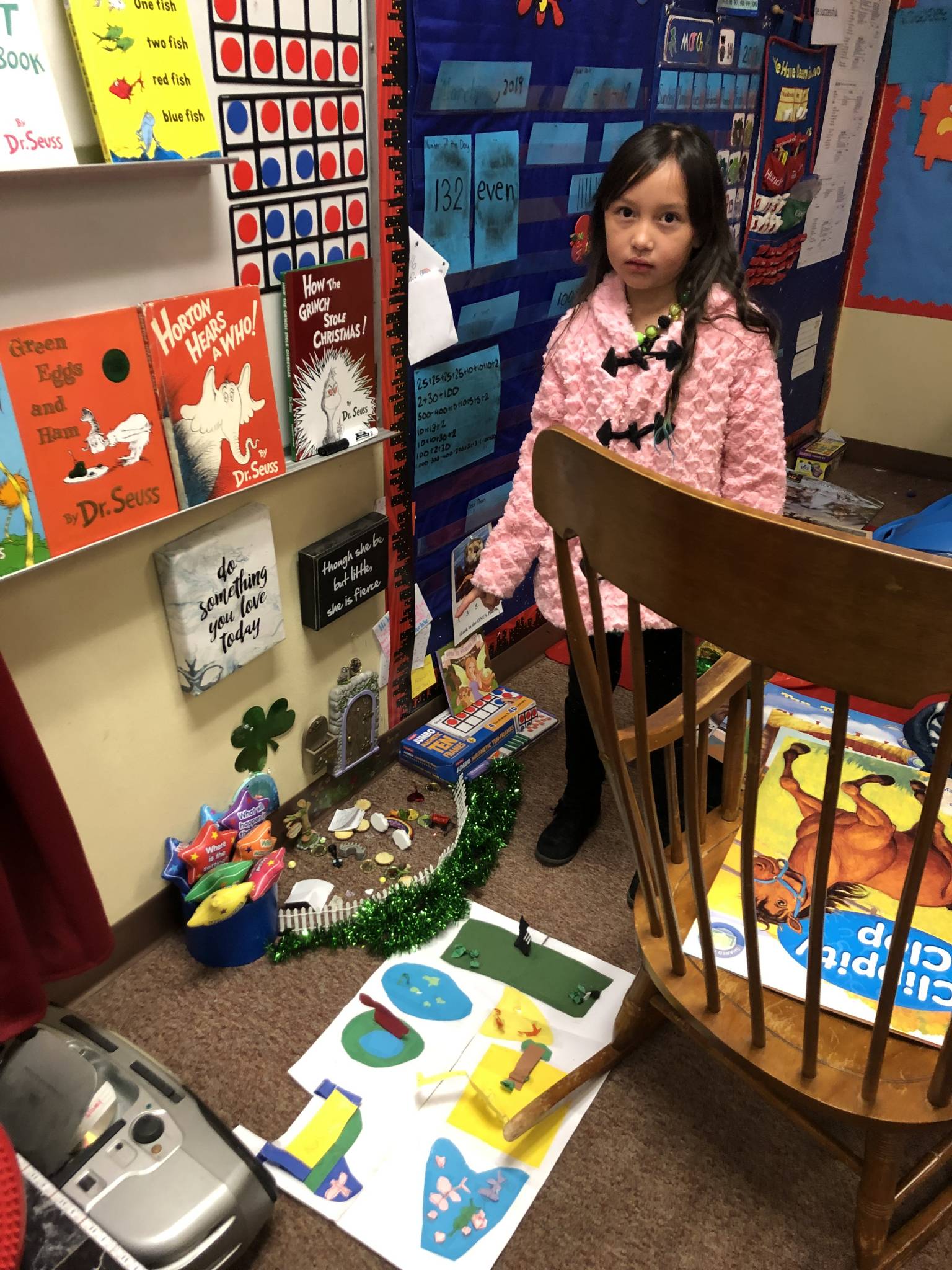

Still in shock, but with a full day of learning ahead of us and no time to waste, my little munchkins started cleaning the giant mess as fast as they could. Then, without any warnings, our principal entered the room (which I will admit, “may” have been pre-planned! ;-)

His face showed his shock….and his disappointment. How could these precious first graders, who love their school, treat their classroom like this? He was speechless. The kids immediately tried to explain what had happened, “We didn’t do it! It was the leprechauns!”
The look on his face said he was not buying it. (Our principal had some theatre training and is a very good actor!) The kids could tell that he was thinking, that WE really did this! They tried their best to explain, but to no avail.
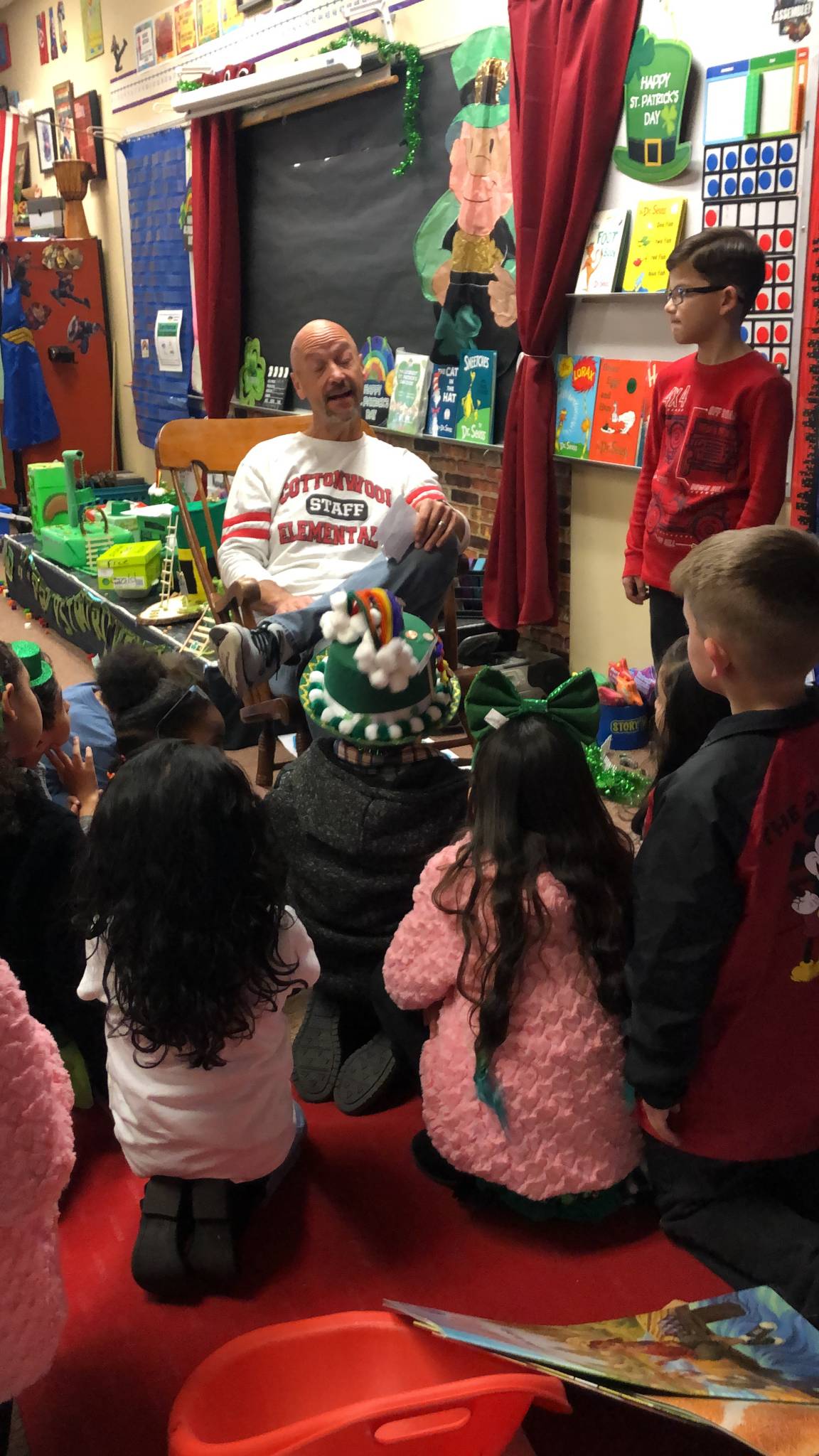
Our principal is a very busy man, and he just doesn’t have time to listen to nonsense. However, despite his busy schedule, he is also very reasonable and very fair. So, he gives the kids their most important assignment to date, to explain to him, IN WRITING, why they are not responsible for the mess. If they can prove that the leprechauns were the real culprits by citing evidence and research, as well as the reasons that they believe that it was them who did this, then he might be convinced to believe us.
The kids wasted no time. They thanked him and then went to work cleaning the classroom. They un-flipped the tables, sharpened the pencils, and began writing.
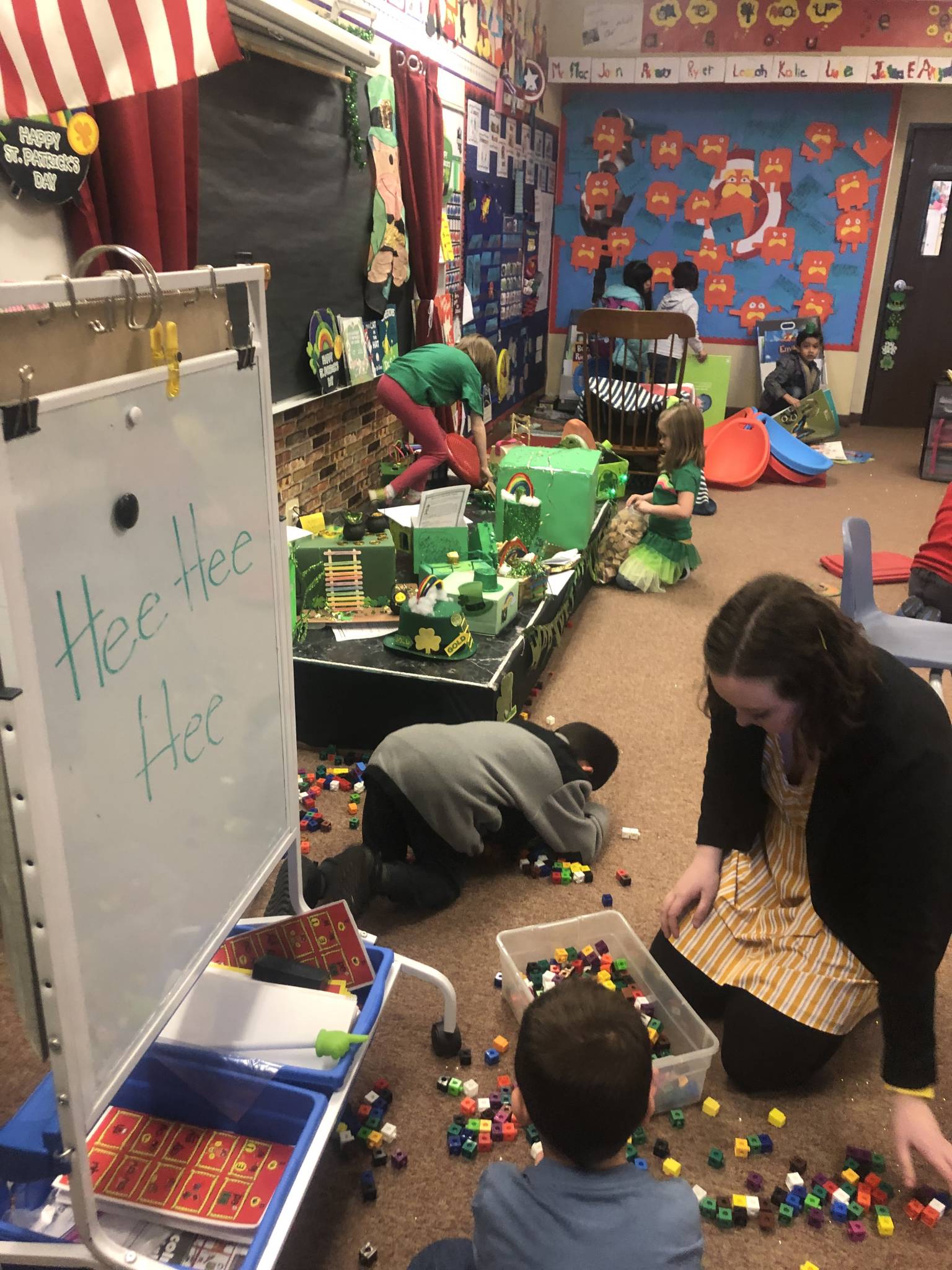
Not Your Typical First Grade Writing
Now was not the time for, “How do you spell Leprechaun?”
Our reputation was on the line! It’s moments likes this when basic kid-writing simply with simple sight words just will not do. We were not going to be able to convince our principal that we were innocent with:
“I like leprechauns.”
“Leprechauns are cool!”
“I really really really like them.”
“Leprechauns are fun!”
Thankfully, we were armed with our Secret Stories and could write exactly what we wanted, no needed to say!
How incredible is that? We know how to write!
In fact, our writing is being requested by our principal!
Why? Because he can read it!
One of the many perks of kids knowing the letters’ “Secrets” is that they can not only read almost anything, they can write almost anything too! And so without any hesitation at all, the kids started to write….and write….and write.
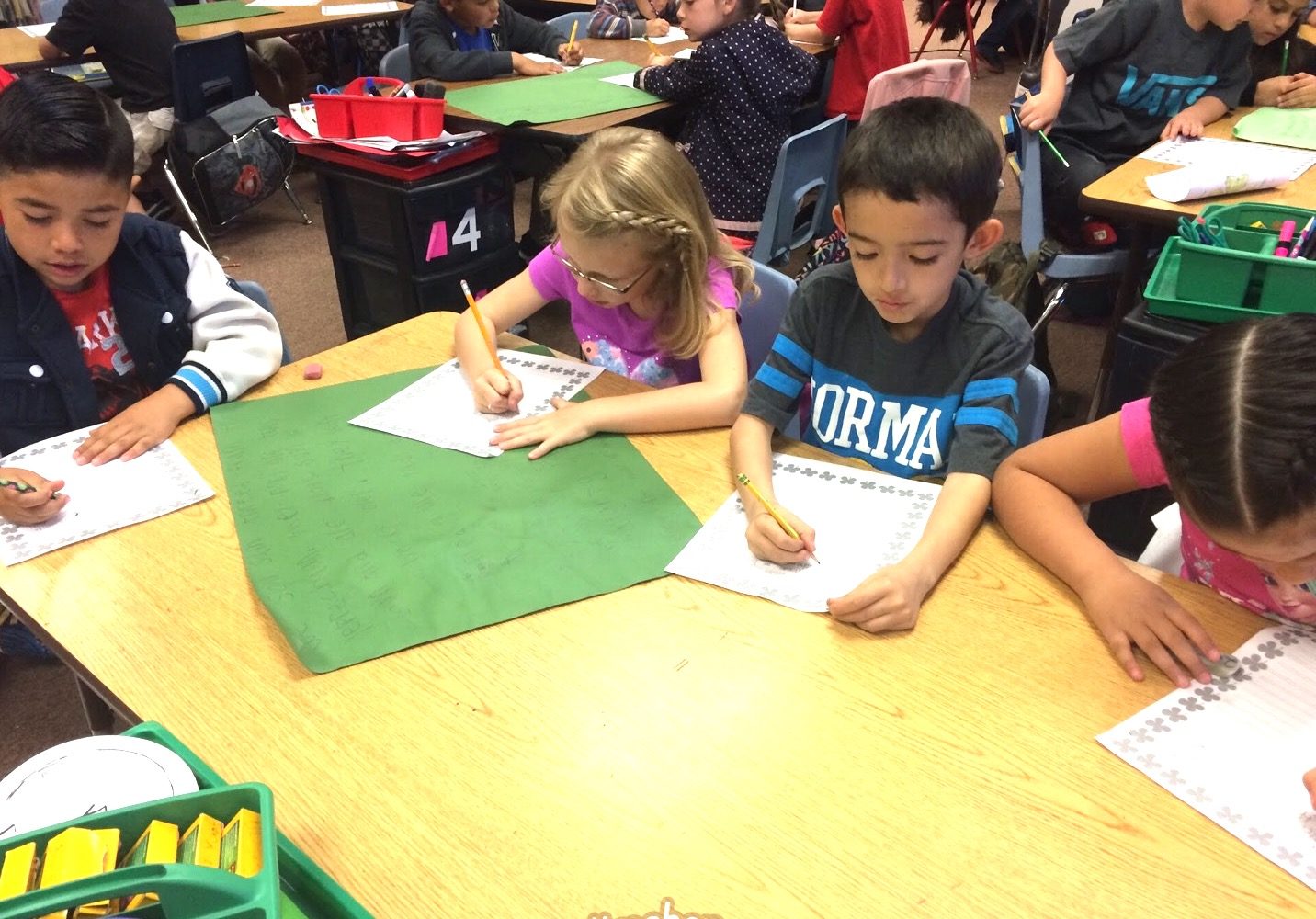
Why did they write so much?
Because they could, and because it was fun!
This awesome (albeit messy) writing adventure was the perfect mixture of play, passion and skills! It wasn’t just fun, it was exciting! Who would think that words like these would ever be used to describe a first grade writing assignment?!!
Our First Grade Persuasive Writing
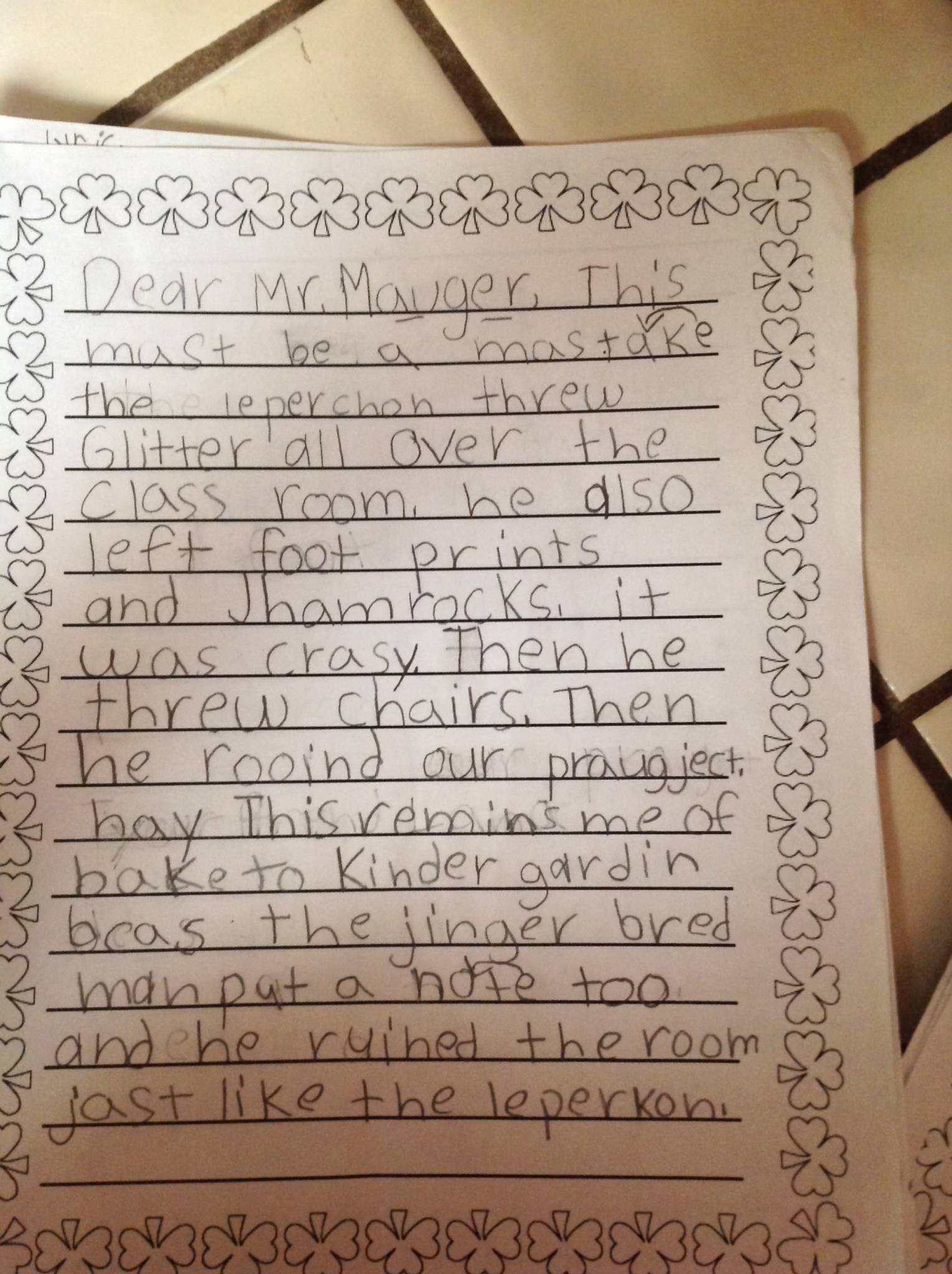
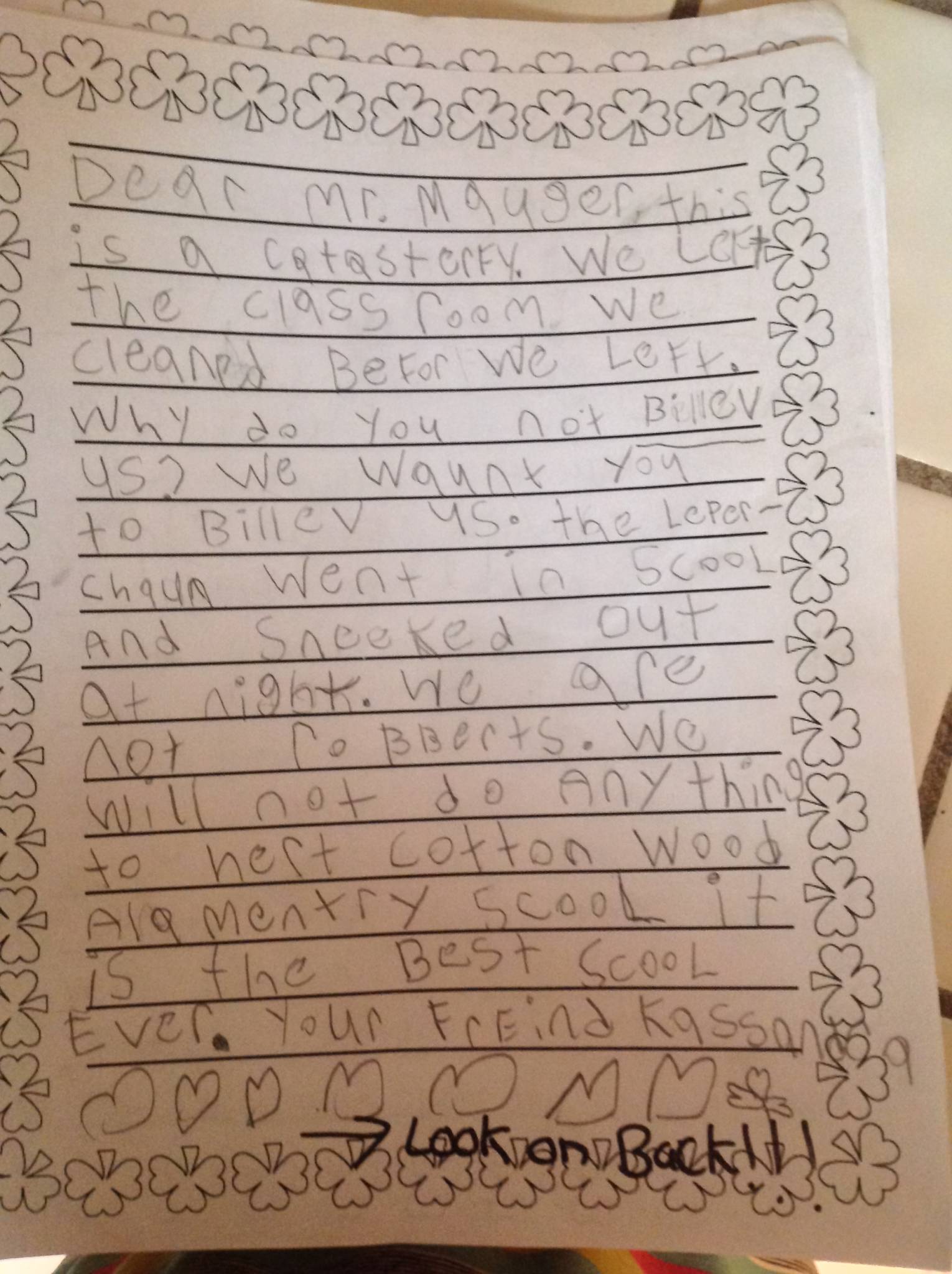
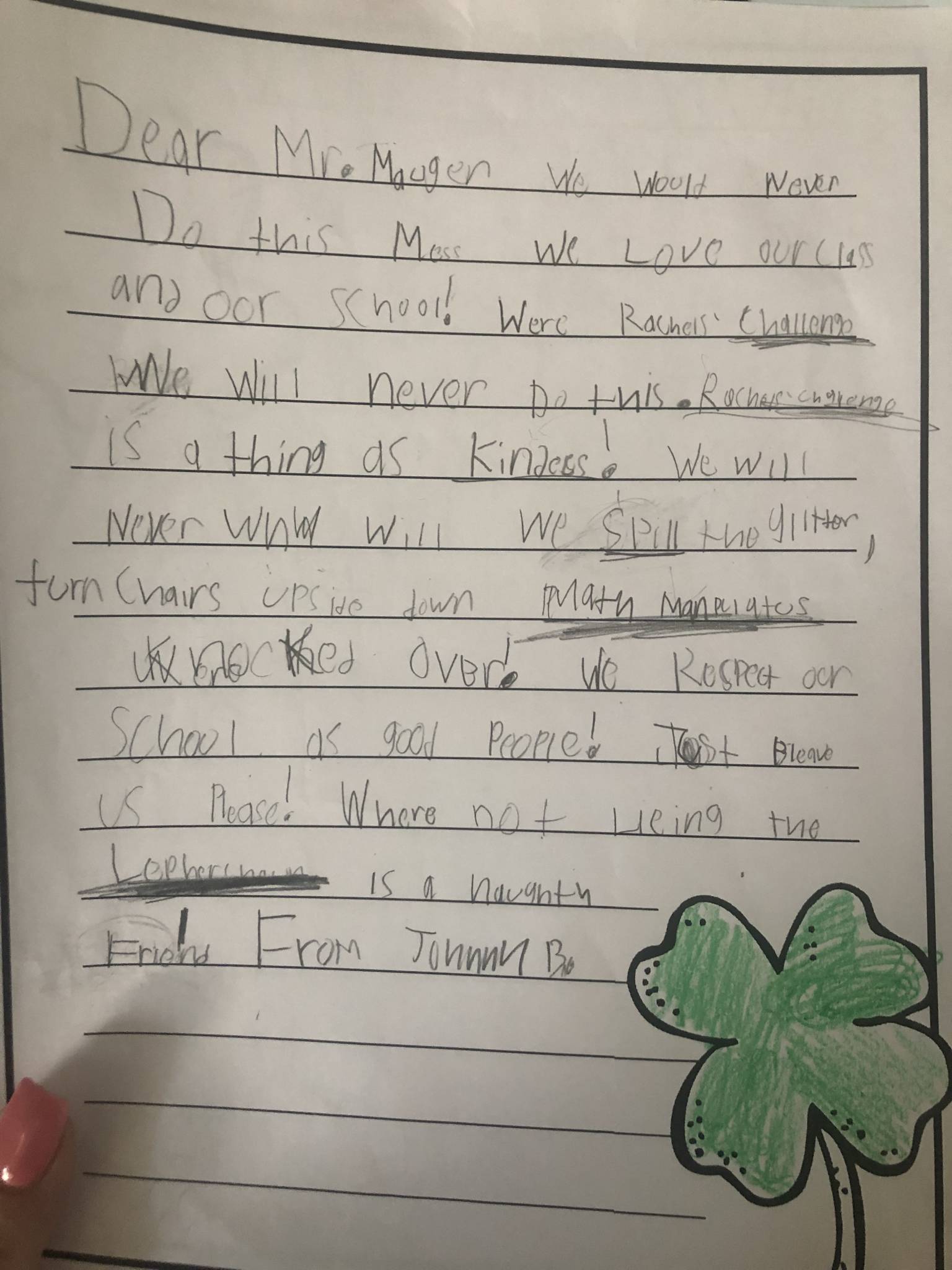
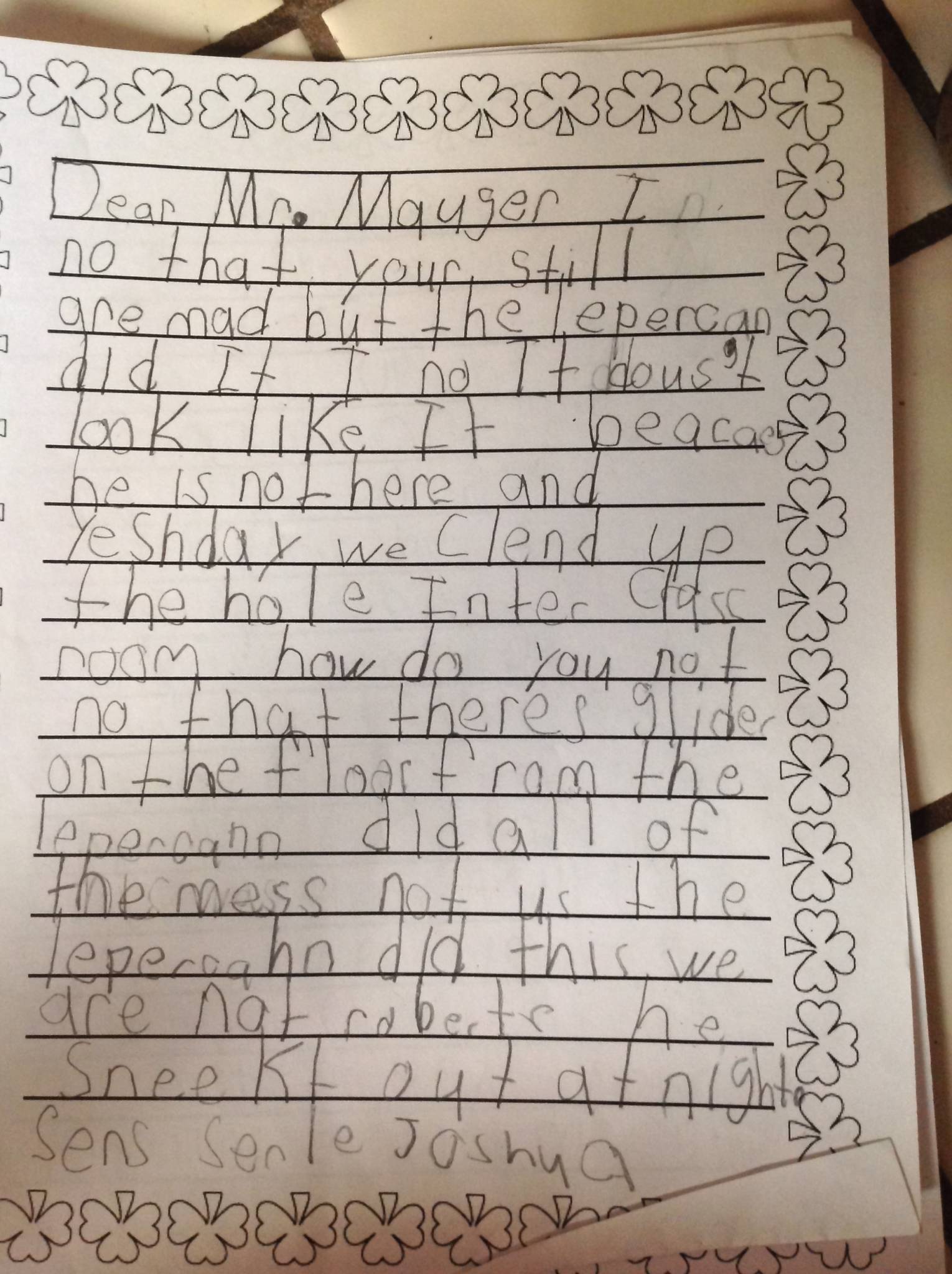
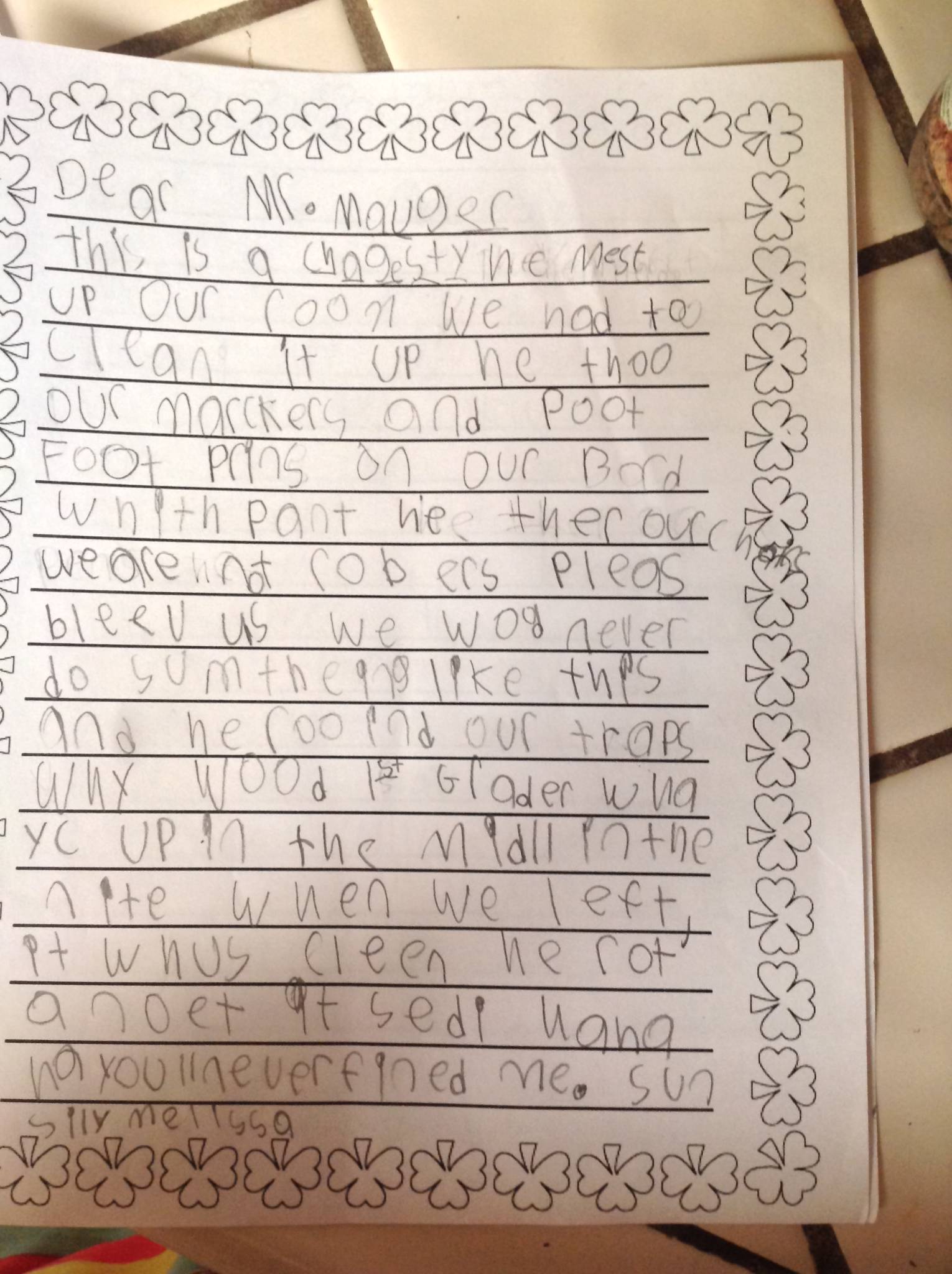
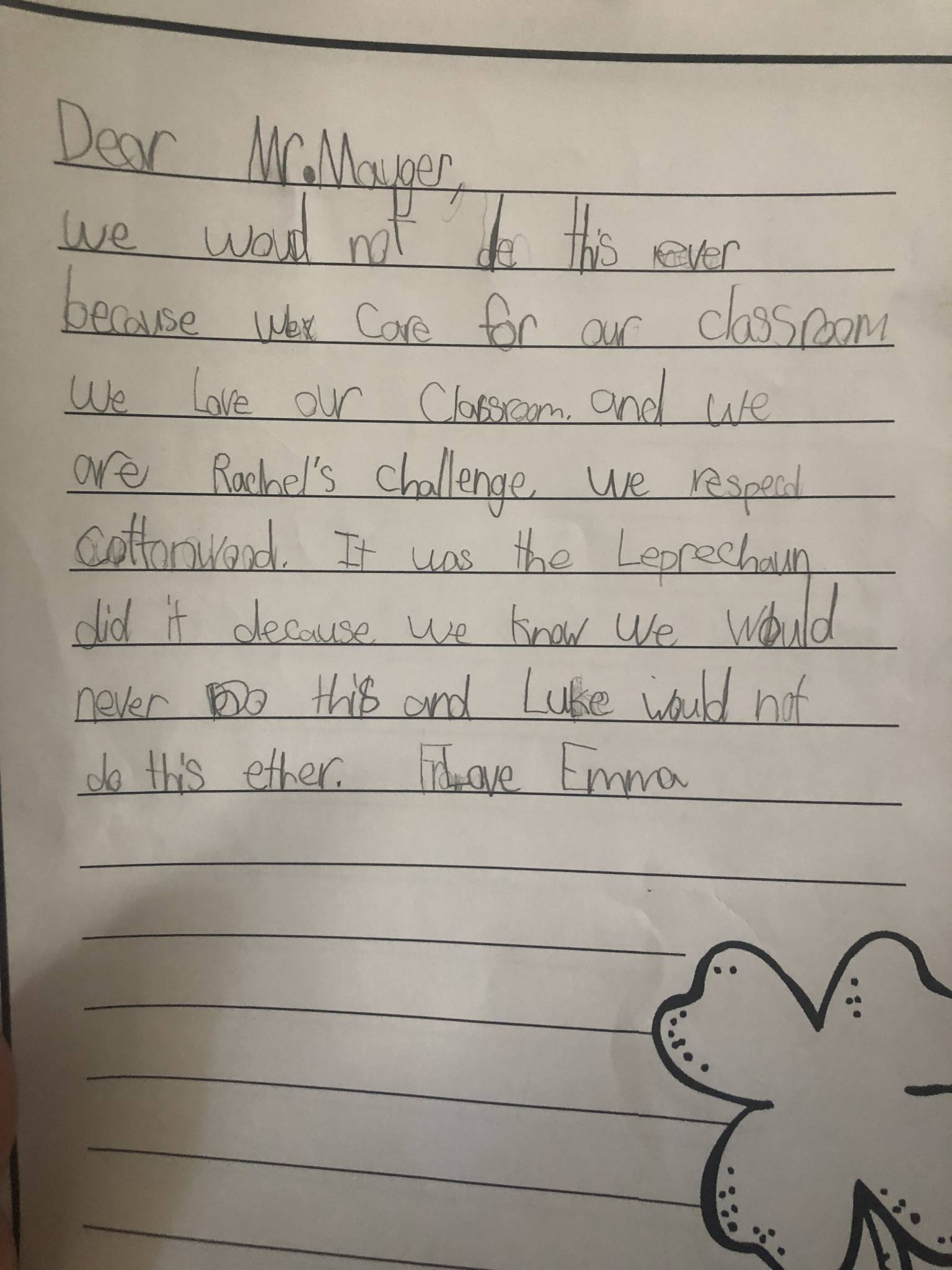
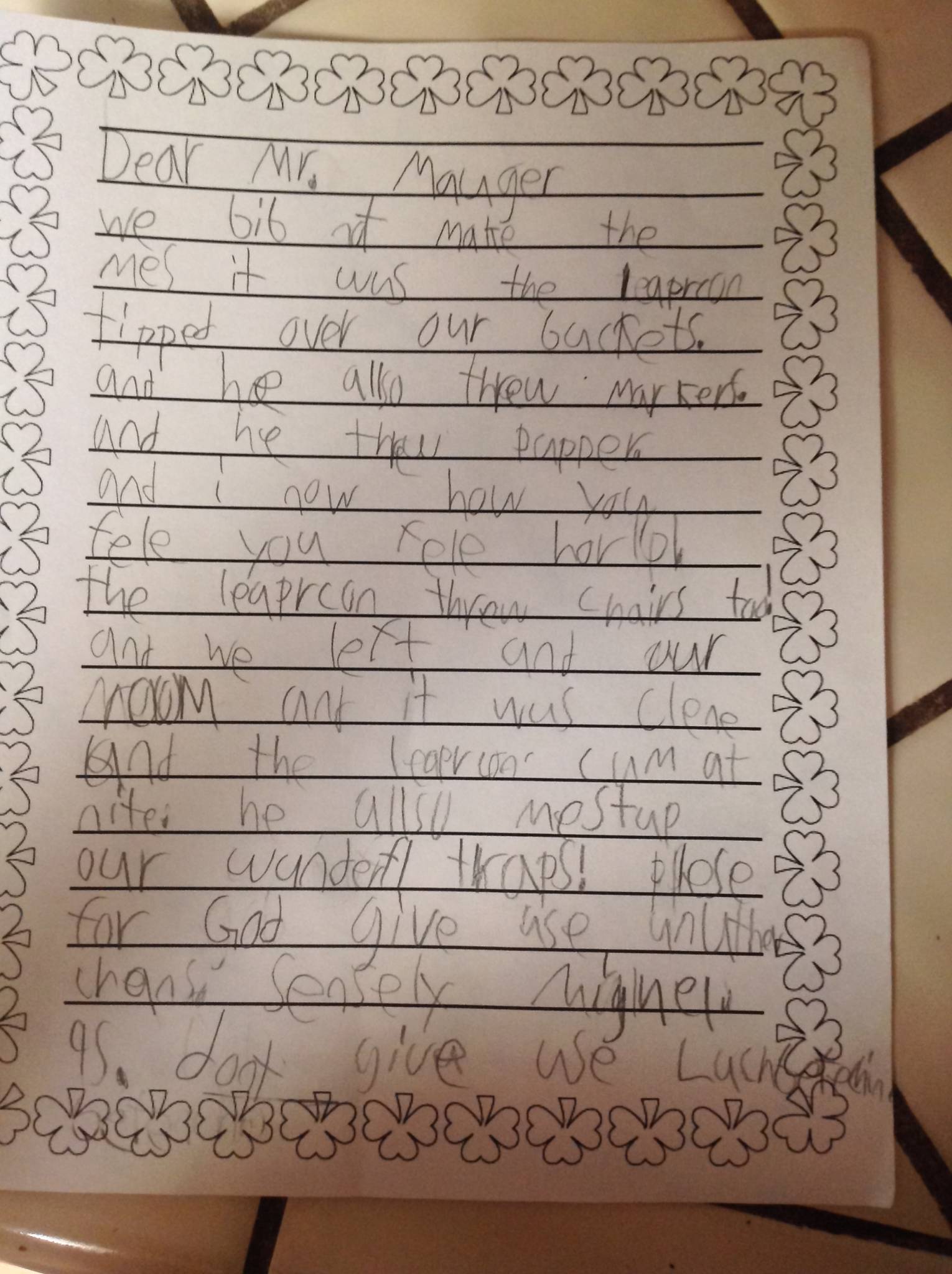
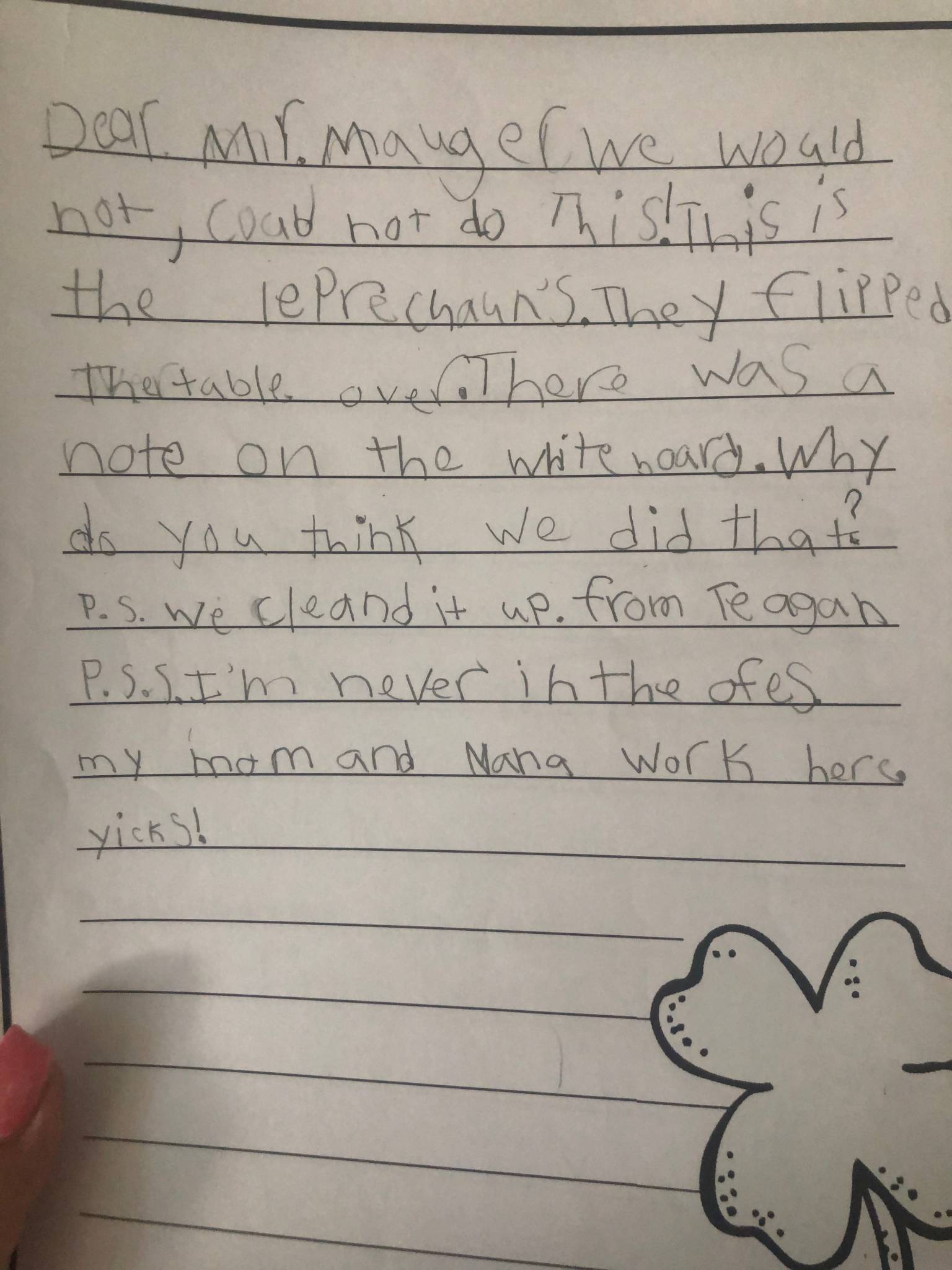
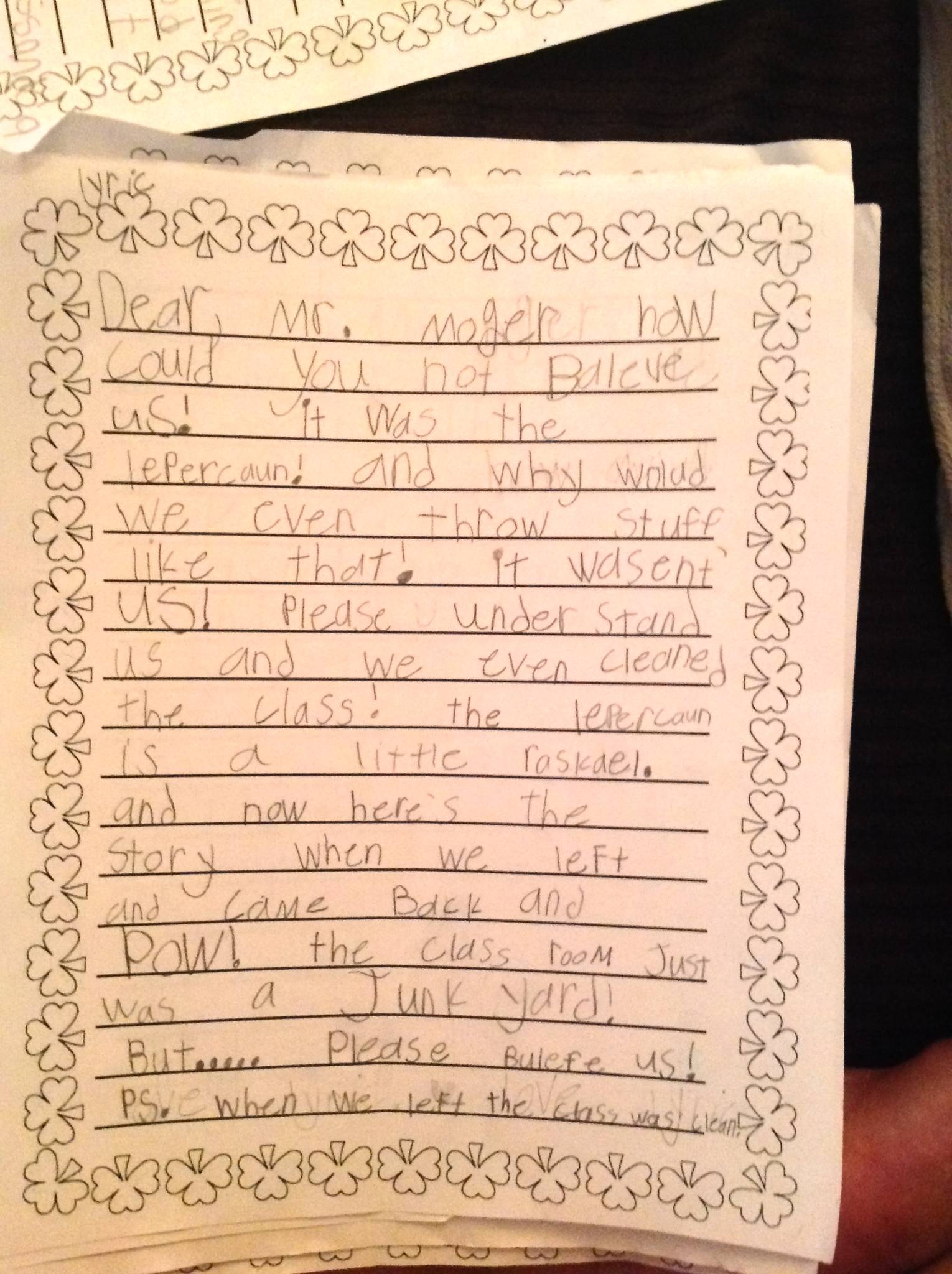
When the last of the writers finished up, I sent our class reps to the office to schedule a meeting with Mr. Mauger so that we could read our letters and plead our case. It was just after lunch that he called us in. The kids gave him their letters and showed him some of the research they had done online.
Then he read all of our letters.
After some persuasive conversation, our principal finally said that he believed us. The kids were so relieved, and so very proud that they had once again written their way out of another sticky situation! (You can read about our trauma over Rocky, the school mascot, here!)
When we got back to our classroom, we sat down and chatted about everything that had happened. I told them how proud I was of them. “Munchkins, because you are officially readers and writers! You wrote exactly what you wanted to say, and didn’t even have to ask me how to spell anything! You had the power and the confidence to write your own thoughts down on paper!” (A quick side note here— If you use Secret Stories, but don’t know about/use the “Zoo Keepers & M&M” strategy, you need to watch this and then download it NOW! It’s free, and really help kids understand that they must “capture” as many letters (and Secrets!) that they hear in the words they are trying to write. It’s a great tool for ensuring Secret Stories skill-transfer to writing. It also makes beginning writing much easier to read, and to enjoy! You can read more about writing with Secret Stories here.)
You might be thinking that such a huge production for a silly little writing lesson is unnecessary. And sure, I could have just passed out a worksheet with a couple of leprechauns on it and a few lines for writing, while listening to the sighs and moans as I explained what the writing topic was and how many sentences they “had to write” in order to be “done.”
The whole lesson probably would have taken no more than twenty minutes and then we could have moved on to something else….all the while keeping our classroom neat and clean! But where is the fun in that?
The truth is that by next year, these kids won’t even remember learning to read and write, just like they don’t remember how they learned to walk and talk. These are tasks that they perform automatically with no effort at all.
Reading and Writing Fluency
And this is my goal for them as readers and writers—that every day, they will become more fluent! They may not recall the actual learning process, but they will never forget the day that a crazed group of leprechauns tore up their classroom, and how they had to rely on their writing abilities to persuade the principal that they were innocent of the crime!
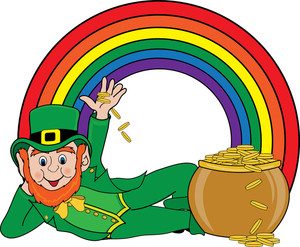
The Importance of Play in Learning
I hope you enjoyed this peek into our first grade persuasive writing adventure, and I hope it inspires you to infuse more “play” into reading and writing activities in your own classroom!
Secret Stories is the missing piece to our “1,000 piece” puzzle!
Weaving “play” into literacy learning is so critical at the early grade levels, and Secret Stories transforms every reading and writing experience into a virtual playground! The Secrets are are play as far as kids are concerned! They can’t stop talking about them and actively “hunt” for them in words throughout the day. They role-play their sound behaviors to get the sounds/spellings they need to read/write.
This may sound odd to those who don’t use the Secrets, but it almost feels like my class and I are on an endless vacation of reading and writing adventures! I say “vacation” because we’ve long since surpassed all of our “required” first grade reading level objectives—with most of the kids reading (and writing) far above grade level, and those who would normally struggle, performing strongly on-grade level.
Our little first grade classroom has become a reading and writing playground where deep learning and critical thinking opportunities abound! (I actually saw a video clip of a kindergarten teacher trying to explain the same thing, and it’s exactly the way that I feel.)
When kids know the Secrets, they “own the code” and have everything they need to read and write what they want. And this is so important, as standard curriculum leaves so many holes. Before I started using Secret Stories, my first graders struggled to read and write anything, aside from the sight words they had memorized.
Teachers need tools, and so do kids! It drives me crazy when I hear teachers who are struggling to teach their kids their kids to read that they “don’t have time for one more thing!”
The Secrets aren’t one more thing. They are EVERYTHING that kids need to read and write, and everything that teachers need to teach them how to do it. They answer all of the questions about why letters make the sounds that they do when “jump off our alphabet chart and into the real words” that we see every day.
Kids can’t help but ask “Why?” anytime they spot Secrets in a word they cannot read. They literally “beg” to hear them, and this is when you realize that you are no longer driving the learning train. The kids are. They have taken over and are seated squarely in the driver’s seat and leading the way in their own learning!
We have time to relax and take literacy lessons to new heights that were never possible before in first grade. I know I sound like a broken record when I say that I cannot imagine teaching in a world without Secret Stories, and when I look back, I honestly have no idea how I ever did.
Renee McAnulty
(a.k.a.”Mrs. Mac’s Munchkins”)
PS I wanted to share a quick “techie-tool” that we use to tie in our technology component, called Flipgrid. The kids recorded themselves reading their letters to Mr. Mauger, and then he recorded his response. The kids love it, and we can even share the links with our parents!
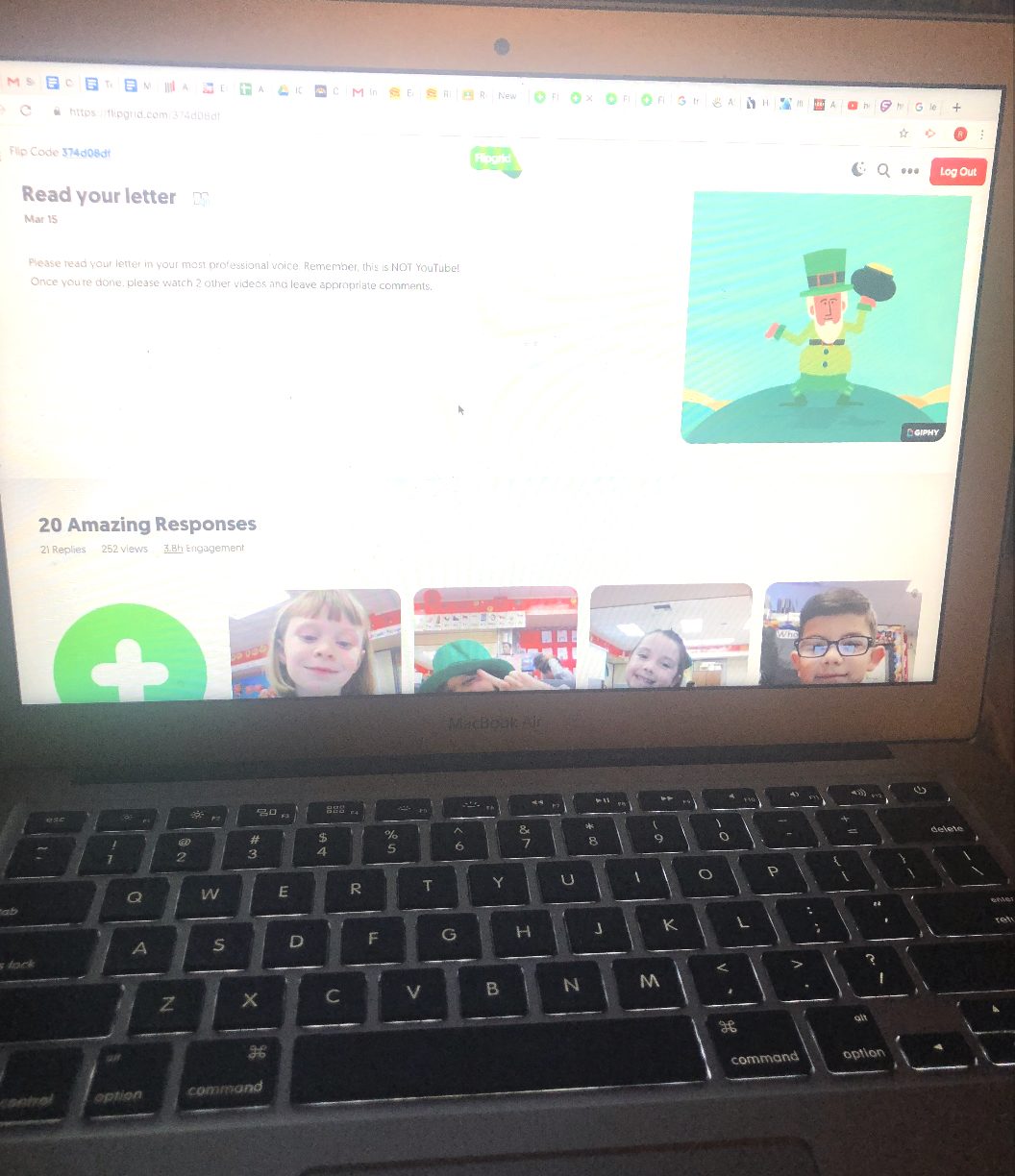
And here is a rough screen recording of one of my littles reading her letter to Mr. Mauger along with his response. (The sound isn’t great, as the kids were all recording at the same time and so there is a lot of background noise.)

